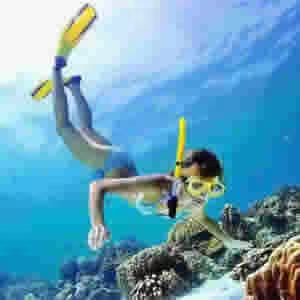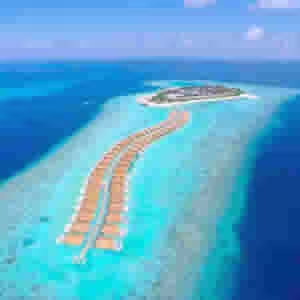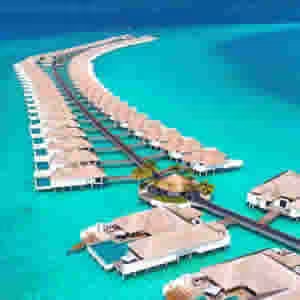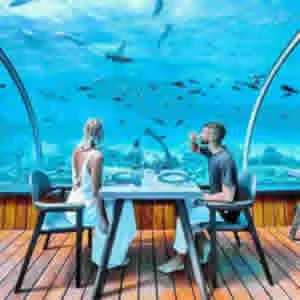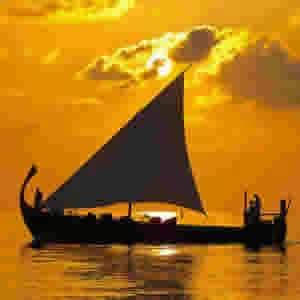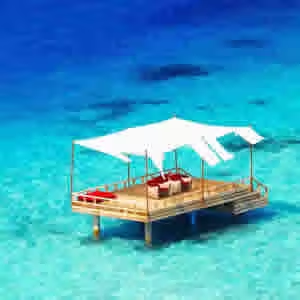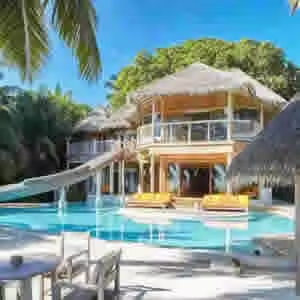Deep Diving essentials
Maldives Scuba Diving guide

05 March, 2023
Deep diving is underwater diving to a depth beyond the norm accepted by the associated community. In some cases this is a prescribed limit established by an authority, while in others it is associated with a level of certification or training, and it may vary depending on whether the diving is recreational, technical or commercial.
What is deep diving?
Divers have different definitions of what a deep dive means, often dependent on their own experiences, but it is generally one beyond 18 meters in depth.
Most recreational diving agencies define a deep dive as allowing divers to descend beyond 18 meters (60 feet).
Divers will often complete a deep diver course to allow them to dive to depths of 40 meters (130 feet) and gain confidence when deep diving.
Deep diver courses are offered by most diving certification agencies and include:
- SSI Deep Diver
- SDI Deep Diving
- PADI Deep Diver
Why go deep diving?
Deep diving allows divers to see world-class dive sites that they wouldn’t otherwise be able to access.
There is nothing like descending into the deep to explore highlights such as Egypt’s shipwrecks, the thresher sharks in Malapascua, or the infamous Belize Blue Hole.
The marine life found at depth differs from that in the shallows and often includes larger pelagic species.
Coral reefs can be well preserved at depth due to less diver traffic, and there is, of course, the thrill of descending alongside a drop-off into the inky depths below.
Where to go deep diving
There are deep diving opportunities worldwide, offering the chance to experience deep diving at any time of year.
Best deep diving in Belize
Belize liveaboard diving has plenty to offer divers, and the Belize Blue Hole is an iconic deep scuba dive not to be missed.
It is considered one of the top ten dive destinations in the world and offers crystal-clear warm waters and diverse marine life.
This submarine sinkhole sits at the center of the Lighthouse Reef system and is a huge 0.25 miles (0.4km) across and 145 meters (475 feet) deep.
Divers begin their Belize Blue Hole dive by passing over a coral-covered shelf that leads into the hole before descending to enjoy stalactite formations and overhangs as they dive.
There is a noticeable thermocline, and the visibility reaches 60 meters (200 feet).
Hammerheads, blacktips, and Caribbean reef sharks are often seen in the depths, and divers level off at 40 meters to view the caverns in front of them. Technical divers can descend to the silty bottom of the hole.
The Belize Aggressor III and Belize Aggressor IV offer Belize liveaboard diving itineraries that include the Blue Hole and other Belize scuba diving highlights.
Best deep diving in Micronesia
Micronesia liveaboard diving offers abundant marine life, vibrant coral gardens, walls, drop-offs, and an array of World War I and II wrecks. All of which make Micronesia a top scuba diving destination.
Liveaboard diving in Palau, Micronesia, offers the chance to explore dive sites around Palau’s numerous islands and includes one of the best deep dives at Blue Corner.
Blue Corner Palau is a natural corner in the sea that borders the deep ocean and is known as one of the best dive sites in Palau. The deep diving at Blue Corner is exciting, with changeable currents and visibility.
The reef has numerous soft and hard corals and abundant schools of fish. A sea wall at 10 meters (32 feet) depth drops all the way down to 330 meters (1082 feet). The wall is covered in coral and sea fans.
A plateau at 12 to 20 meters (39 to 65 feet) is covered in cabbage corals. Divers can enjoy jacks, barracudas, snappers, and the Palau Napoleon wrasse.
Sharks, eagle rays, wahoos, giant groupers, and green and hawksbill turtles are also seen regularly. Being used by divers, these species come close and are perfect for underwater photography.
There are a variety of Blue Corner liveaboard diving vessels that cruise throughout Palau, including the beautiful SY Palau Siren.
Best deep diving in Egypt
Egypt is a world-class diving destination offering warm waters and colorful coral reef diving.
Scuba diving at The Brothers in Egypt is spectacular, with diverse marine life and coral cover. Many pelagic species are attracted to the steep drop-offs, and there are two shipwrecks to explore.
Big Brother hosts the Aida II wreck, stretching from near the surface to 30 meters (100 feet). The deeper end of the wreck is one of the best deep dives to see sharks at The Brothers.
Little Brother also hosts sharks at a huge plateau at 40 meters (130 feet), where divers can see Silvertips, oceanic whitetips, and hammerhead sharks.
Marsa Alam is a hub for Red Sea diving and scuba diving at Elphinstone, one of Egypt's most popular trips.
Steep drop-offs descend thousands of meters to the sea bed, and strong currents bring in plentiful pelagic life. The diving at Elphinstone includes steep wall dives with strong drift and diverse marine life.
The Southern Plateau is a great deep dive down to 40 meters (130 feet) and is one of the best Elphinstone dives for sharks.
Straits of Tiran liveaboard diving is another Egypt diving highlight, with plenty of options for deep dives at coral reefs. Woodhouse Reef has a deep drop-off and is a great drift dive at around 30 meters (100 feet) depth.
Any Egypt scuba diving trip should include at least one of the iconic wreck dives. Scuba diving on the Thistlegorm is not to be missed; divers can explore this world-famous wreck at 16 to 33 meters (52 to 98 feet).
There are numerous Egypt liveaboards to choose from to create a perfect Red Sea diving experience.
Best deep diving in Thailand
Thailand liveaboard diving offers enough to tempt any diver and is known for affordable liveaboard diving and incredible diving opportunities.
Diving the Similan Islands in Thailand is no exception, offering some of Thailand's most prolific dive sites thanks to the area’s status as a national park.
Similan Islands scuba diving is diverse, with rocky granite formations and strong currents in the west that provide swim-throughs, ledges, and caverns to explore. To the east, scuba divers can enjoy easier diving and sloping coral reefs.
Elephant Head Rock is a well-known deep dive that reaches a maximum depth of 50 meters (165 feet), where divers can find leopard and oceanic whitetip sharks. Mantis shrimps are seen in the depths, whilst hawksbill and olive ridley sea turtles stay in the shallower areas.
There are a variety of Similan Islands liveaboards to choose from to explore this fascinating destination.
Best deep diving in Polynesia
The far-flung paradise islands and atolls of Polynesia offer premier diving where divers can be swept through channels or along reefs whilst enjoying pelagic life such as blacktip, silvertip, grey reef, and silky sharks, plus manta rays, dolphins, and spawning Marbled Grouper during June and July.
Rangiroa is the most well-known atoll and one of the world's largest atolls, at 170 square kilometers. The Tiputa Pass at Rangiroa is washed by strong currents, making for an exciting deep dive to 40 meters (130 feet) deep and beyond.
Divers can see huge schools of grey reef sharks, manta rays, Napoleon wrasse, and plentiful reef fish. Bottlenose dolphins hang out at the channel entrance, and occasional tiger sharks are seen at this dive site.
Polynesia liveaboard diving is possible with the newly built French Polynesia Master and the Aqua Tiki II catamaran.
Best deep diving in Australia
Liveaboard diving Australia offers diverse scuba diving, from the Great Barrier Reef in Queensland to the stunning Rowley Shoals and whale sharks of Western Australia liveaboard diving.
The SS Yongala wreck off Queensland is only visited by a select few liveaboards and is known as one of the best wreck dives in the world. This ship sank in 1911 and is in great condition because it is well-managed and protected by the Historic Shipwrecks Act.
The wreck is around 28 meters (91 feet) deep and is a huge 109 meters (357 feet) long. She is covered in corals and sponges, making for a colorful deep dive. Plentiful fish species exist at this dive site, including sea snakes, turtles, bull rays, and sometimes bull sharks.
SS Yongala liveaboard diving is not to be missed, and divers can contact us for more details about this special destination.
Best deep diving in the Galapagos
Galapagos liveaboard diving is ideal for visiting the remote Darwin and Wolf islands, where divers can enjoy huge schools of scalloped hammerheads, Galapagos sharks, silky sharks, whale sharks, and manta rays.
Scuba diving at Darwin Island offers great diving and abundant marine life that keeps divers returning to this special island each year. There are numerous reef fish, dolphins, sea lions, and sharks.
El Arenal, or Darwin’s Pillars (formerly Darwin's Arch), is one of the best Galapagos deep dives and received its original name from the distinctive stone arch that used to rise above the surface, sadly this arch collapsed due to natural erosion in 2021 and just the 2 side pillars have been left to mark the dive area. Divers can stay at 18 meters (60 feet) at a rocky ledge to watch passing marine life or continue descending to depths of up to 60 meters (196 feet).
Whale sharks, hammerheads, and jack schools are abundant at this unique Galapagos deep dive site.
A handful of Galapagos scuba diving liveaboards offer a very high standard of accommodation and service.
Best deep diving in the Cayman Islands
The Cayman Islands have over 350 dive sites to choose from, and the Cayman Islands' liveaboard diving offers historic wrecks, coral gardens, and dramatic wall dives just waiting to be explored.
Bloody Bay Wall at Little Cayman is one of the most popular dives in the Cayman Islands and features a sheer vertical drop-off that plunges to over 914 meters (3000 feet) deep. The wall is covered with marine life, and a range of corals, sponges, and fans provide a habitat for numerous critters perfect for macro photography.
The wall also hosts larger marine life, such as eagle rays, turtles, morays, jacks, and Nassau groupers. It is one of the most photographed liveaboard dive sites in the world.
The water visibility can reach up to 45 meters (147 feet) at Bloody Bay Wall, and there are over 13 dive sites, plus deep dive opportunities, to enjoy during Bloody Bay Wall liveaboard diving.
The Cayman Aggressor IV offers safaris to explore Grand Cayman, Little Cayman, and Cayman Brac's walls and shipwrecks, including Bloody Bay Wall.
Best deep diving in the Philippines
There are over 7000 islands dotted throughout the tropical seas of the Philippines, offering diverse diving in the Coral Triangle, where divers can enjoy muck diving, wreck diving, and plentiful sharks.
The Visayas offer Coral Triangle critters such as pygmy seahorses and mandarin fish, whilst shark fans can enjoy encountering elusive thresher sharks during Malapascua liveaboard diving.
Malapascua is the only place in the world where thresher sharks are seen daily, and this island offers over 20 scuba diving sites. Monad Shoal at Malapascua is a submerged island with a steep drop-off that descends 200 meters (656 feet) into the inky depths. This setting attracts thresher sharks, manta rays, devil rays, and more to the cleaning stations.
Shark Point and Shark Wall are Monad's two main thresher shark dive sites and are deep dives to around 25 meters (82 feet).
Kimud Shoal is another Malapascua dive highlight and is the place to visit for hammerhead sharks in the Philippines. Kimud island lies near Monad Shoal and is also characterized by a steep slope reaching to depths over 200 meters (656 feet).
The Philippine Siren and Seadoors both offer liveaboard diving to Monad and Kimud Shoals.
When to go deep diving
April to June is considered the best season for Belize scuba diving, though diving is possible all year.
There are two main dive seasons in Micronesia:
- The high season is December to March, offering calm seas and drier weather
- The low seasons of May, June, and September offer the lowest prices and the least visitors
Great scuba diving is available year-round in Egypt, with accessible deep dives all year.
The best time to dive into The Brothers depends on what divers want to see. The hammerhead season is from May to June, but thresher sharks are more frequent in winter.
Whale shark season at Elphinstone is between May and July, hammerheads are more frequent in the summer, and thresher sharks visit in the winter.
The Thistlegorm is an amazing dive year-round.
The Similan Islands' scuba diving season is from November to early May, with the warmest months being February and May.
Scuba diving in French Polynesia is possible all year. Humpback whales can be seen during the colder season and spawning Marbled Groupers in June and July.
The Cayman Islands boast year-round diving, but May and June offer the best chance for good diving conditions.
Galapagos scuba diving is possible all year, with two main seasons:
- The wet season of January to June offers warmer water, with January to May being a good time to visit for mantas and hammerheads
- The dry season is usually busier and offers the chance to see whale sharks. Darwin Island diving is possible all year.
Liveaboard diving at Monad Shoal and Kimud Shoal can be done all year. Thresher sharks, whitetip sharks, and manta rays are present year-round, whilst Hammerheads peak in March or April.
What marine life can be seen when deep diving?
The marine life seen whilst deep diving depends on the dive location. More details about marine life highlights can be found in the destination guide above.
Who can try deep diving?
Any diver can try deep diving once they are qualified to do so. The first deep dive should be completed with a dive instructor.
What deep diving gear do divers need?
Deep diving within recreational limits doesn’t require special equipment, though dive gear should be well maintained and properly set up to avoid problems at depth.
It can be helpful to carry a dive torch for deeper dives to illuminate lost colors and use a dive computer with an audible depth alarm to maintain depth awareness.
Some divers carry an additional small cylinder or pony bottle when deep diving.
What diving skills do deep divers need?
Deep diving requires greater diver awareness and strong dive skills.
Dive training agencies deep diver courses to learn appropriate deep dive skills and dive knowledge. Divers should consider their previous diving experience and if they are ready to begin deep diving before signing up for a course.
What are the main hazards of deep diving?
The main hazards of deep diving are decompression sickness, nitrogen narcosis, and rapid air consumption from being at depth.
These risks can all be minimized with careful dive planning and training.
Scuba Diving in the Maldives
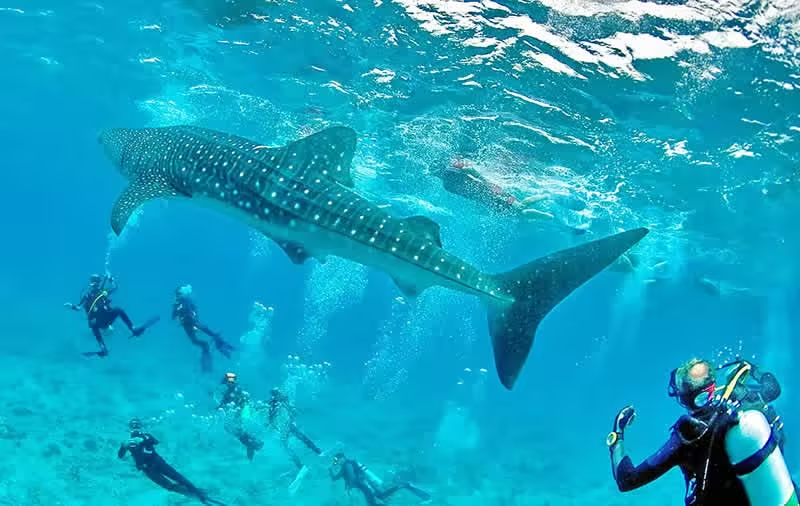
Scuba diving in the Maldives means diving at one of the worlds best scuba diving destinations, because of the white sand beaches, coral reefs, clear warm waters, dive sites and a thriving and vibrant marine life. Explore excellent dive sites and a collection of underwater gardens. They're abundant with extensive coral reefs and magnificent fish life. It's common to see sharks, turtles, manta rays, whale sharks and a kaleidoscopic range of tropical sea creatures.
Read More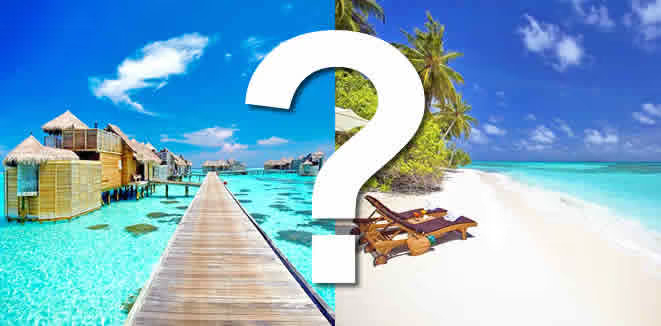
Beach or Water Villa?
Maldives - a name that became synonymous with honeymooners' paradise in the tourism world, has slowly revamped to cater to the needs of families visiting
Read More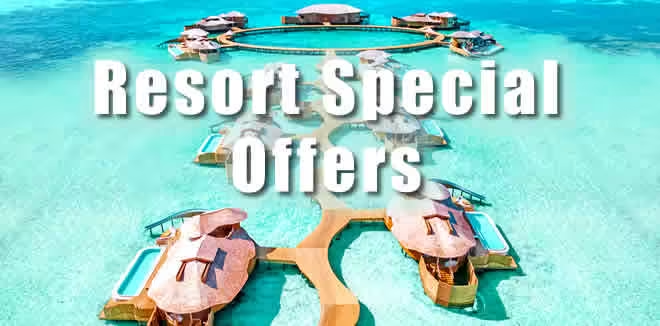
Best Maldives Resort Offers & Packages
Find out more about the most unparalleled Maldives hotel deals and special rates, when Book Direct your next beach holiday
Read More
Maldives Hotel Reviews
Some of the best hotels and resorts in the Maldives are already included in this list, and the good part of them offers the best prices. We will constantly add new hotels
Read More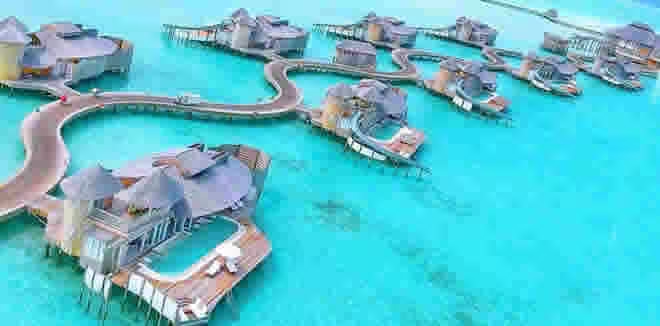
10 Exclusive Resorts in Maldives
The Maldives is paradise destination that should be on the bucket list of every discerning travelers. There's a special breed of hotels there that cater to the most tasteful of luxury travelers Read More
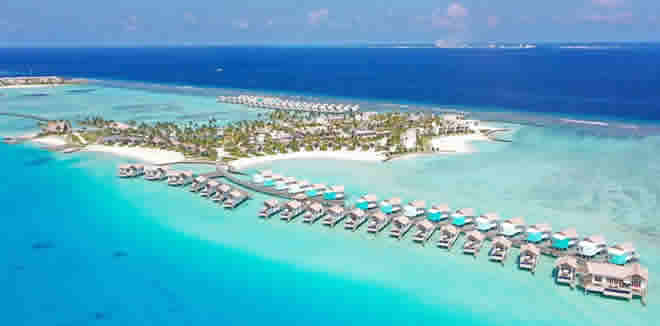
Newest Maldives resorts to Explore in 2024
Here are just 10 of the amazing new resorts in the Maldives that are set to welcome guests Read More
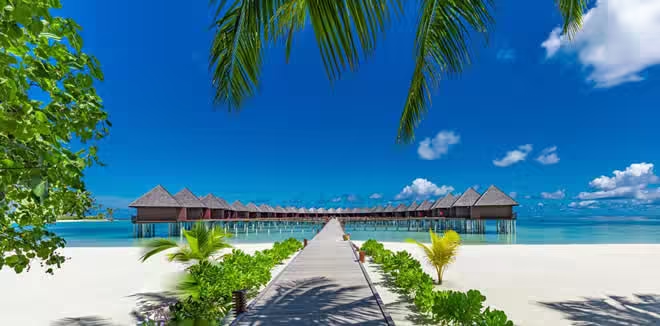
10 Most Affordable Water Villas
While it may never be cheap to visit thу Maldives, fortunately there are still some chic and relatively affordable overwater villas you can stay. Read more
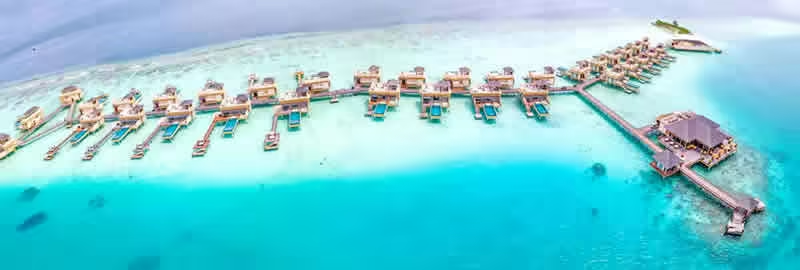
Maldives Luxury Guide
Here's the best of Maldives for luxury travellers. We've compiled the finest recommendations of places to stay, ranging from the most celebrated five-star resorts to luxurious private islands Read More
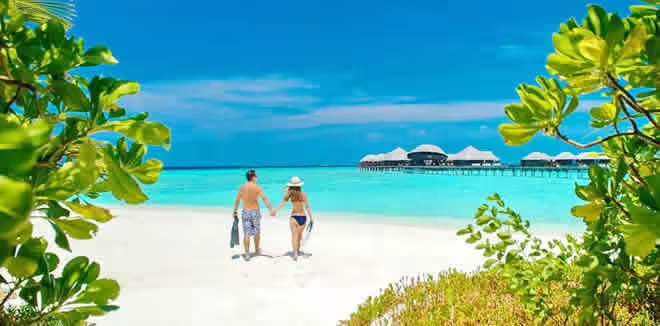
Maldives Romantic Guide
The ultimate ‘flop and drop' and honeymoon destination, the Maldives is the playground for the most amazing and finest utilization of each second of this extremely valuable and hopeful time with each other in tota Read More
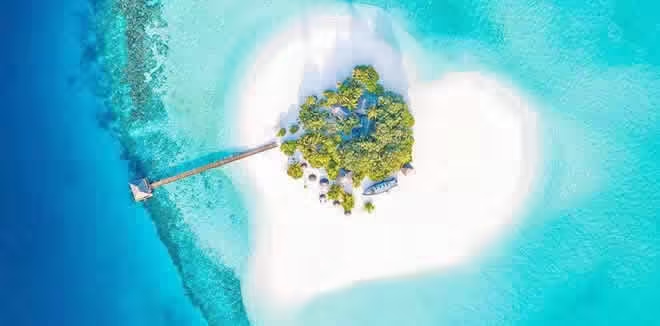
Maldives Budget Guide
Budget travellers choose Maldives as their destination of choice thanks to the variety of affordable stays Read More
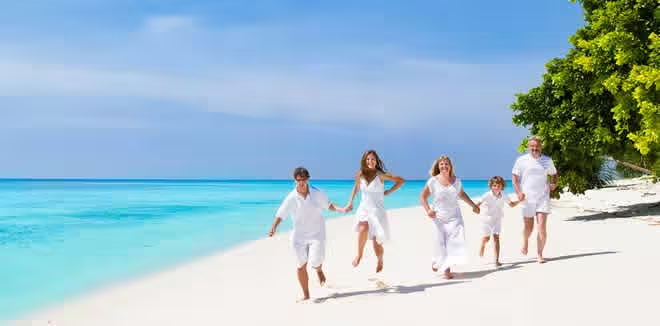
Maldives Family Guide
Maldives - a name that became synonymous with honeymooners' paradise in the tourism world, has slowly Read More

Maldives Diving Guide
The life of these paradise islands below the Indian Ocean's level is the main draw attracting thousands of divers Read More










